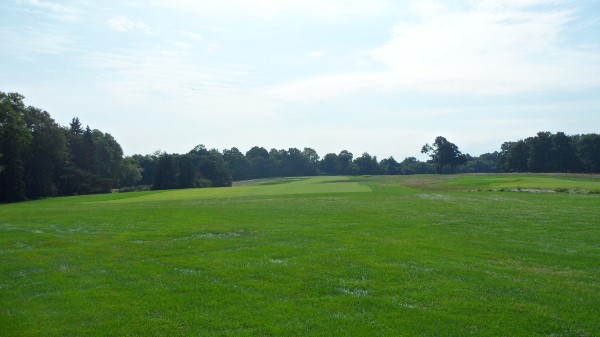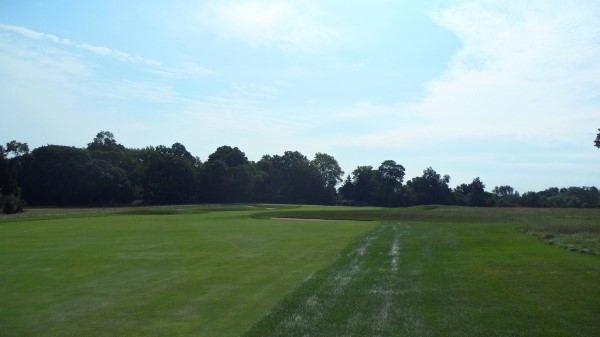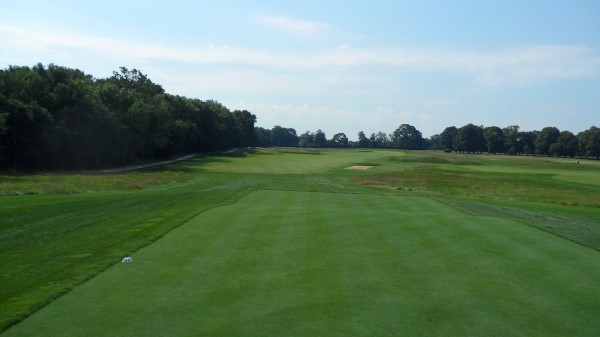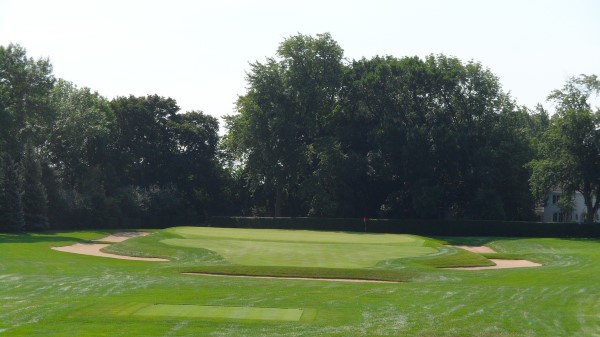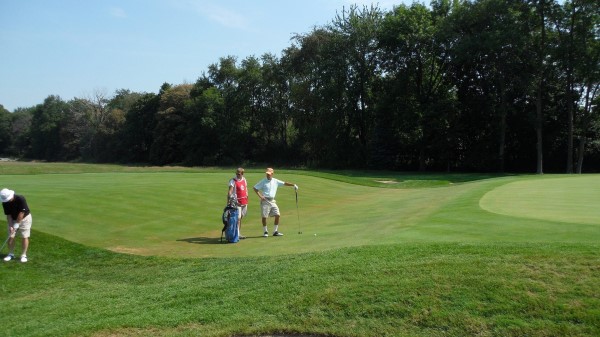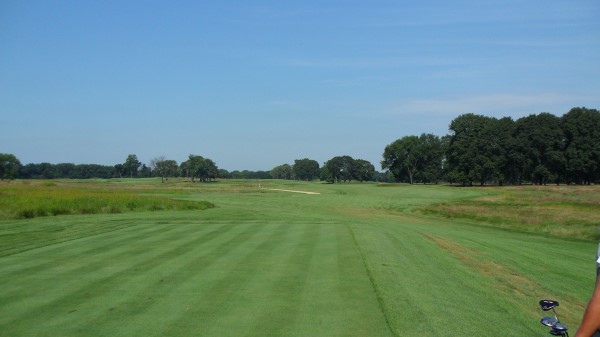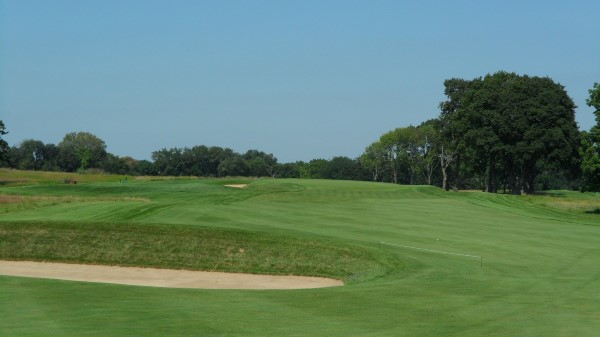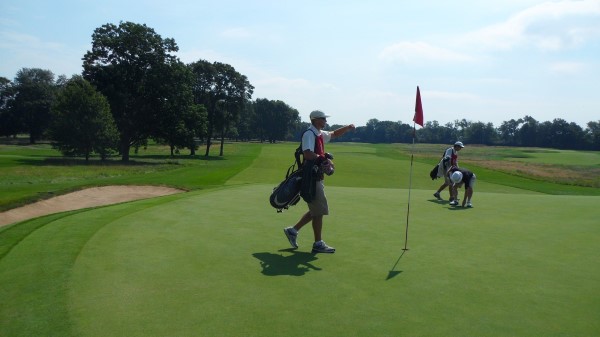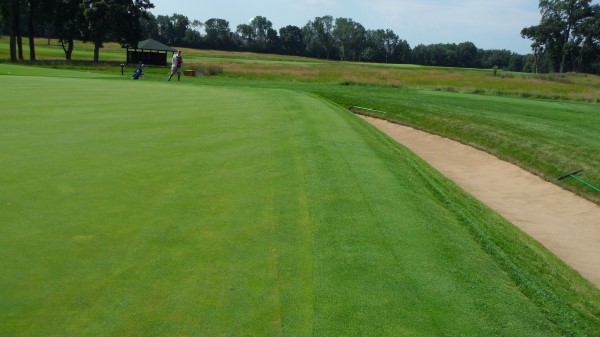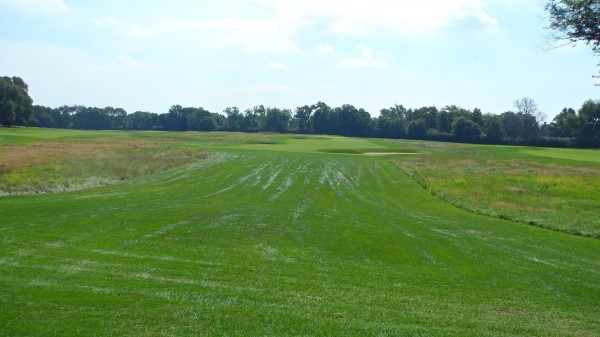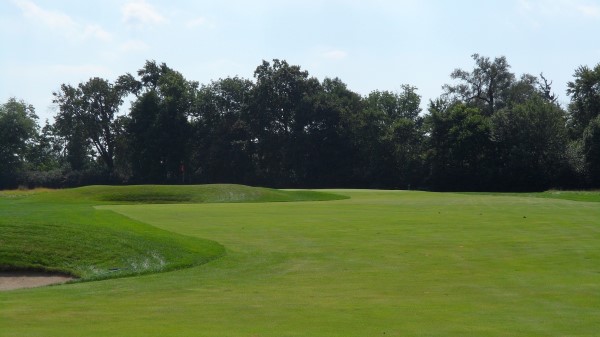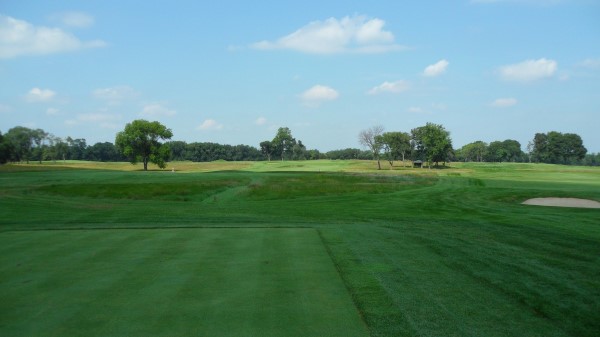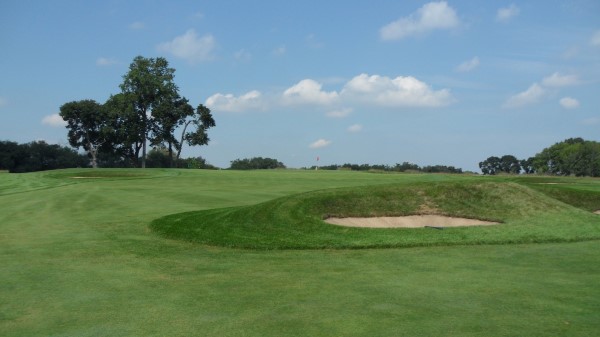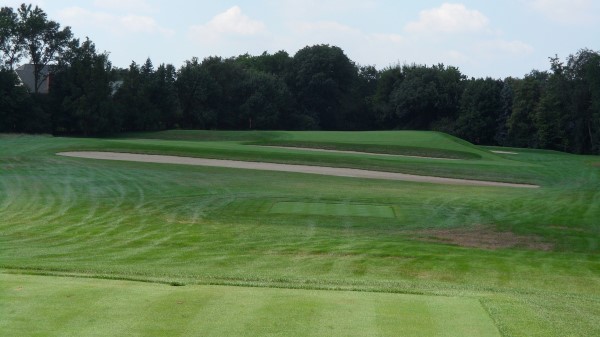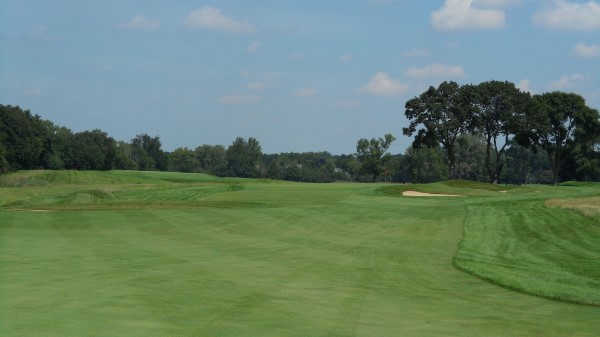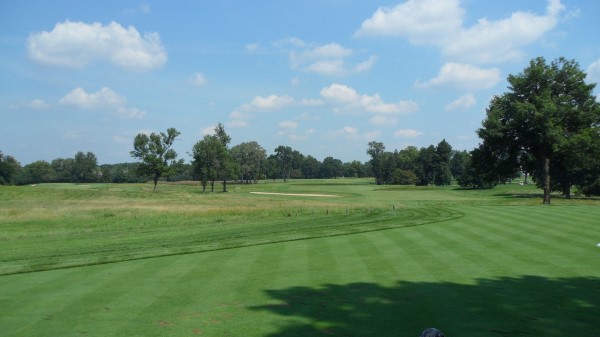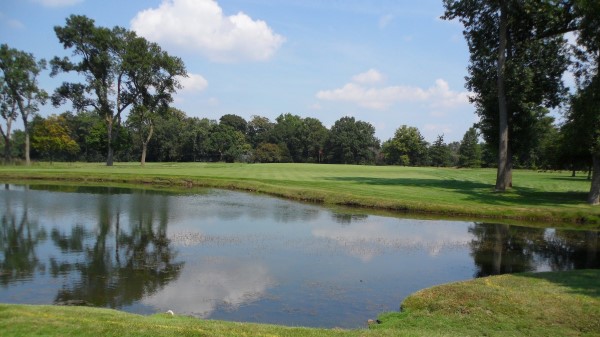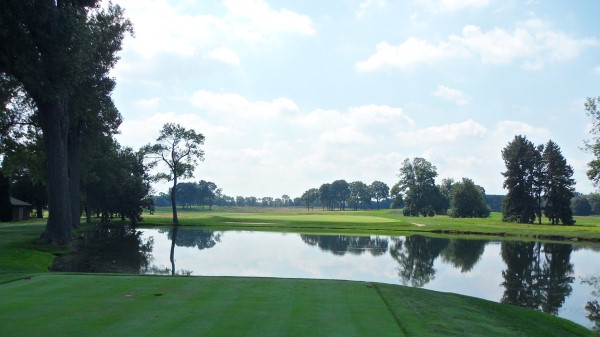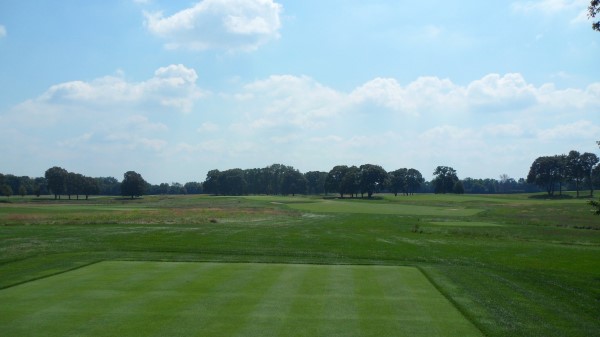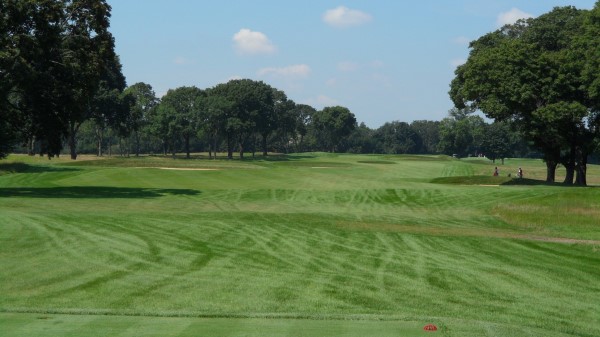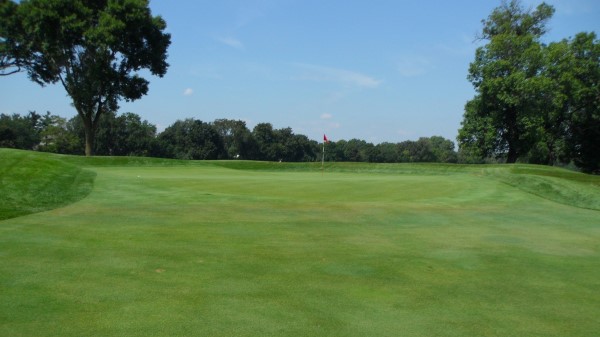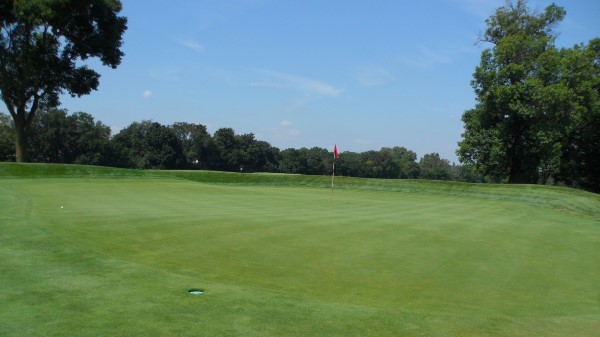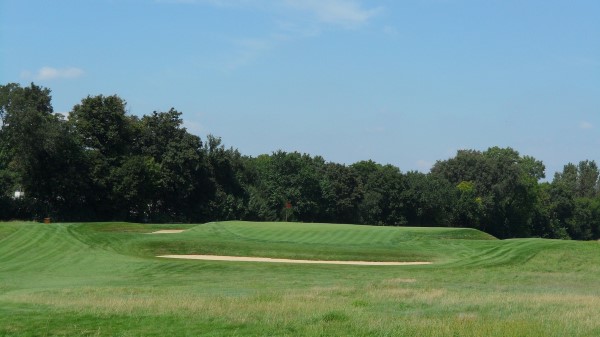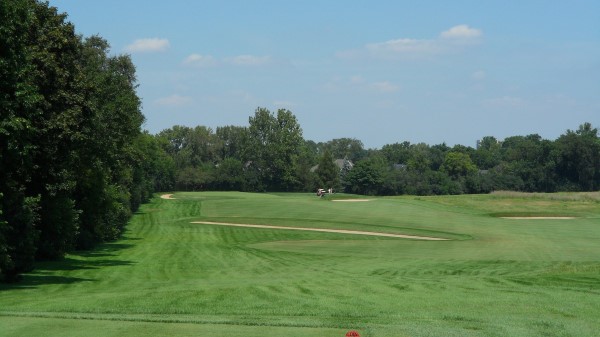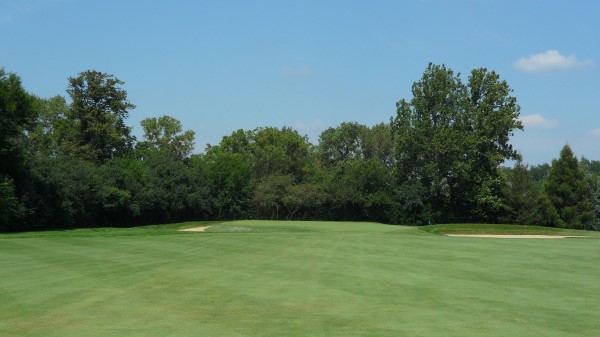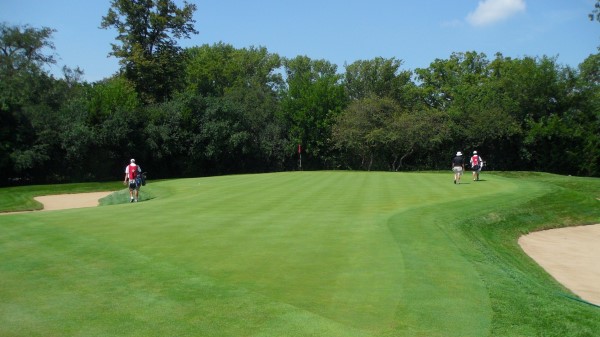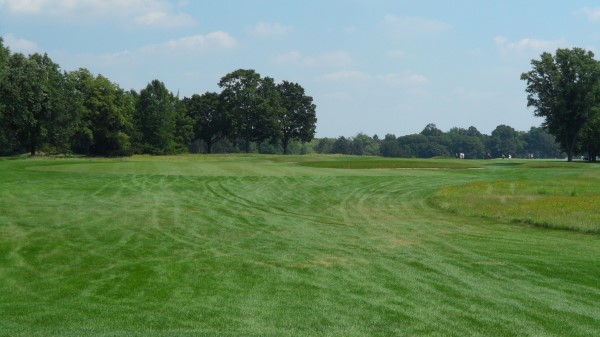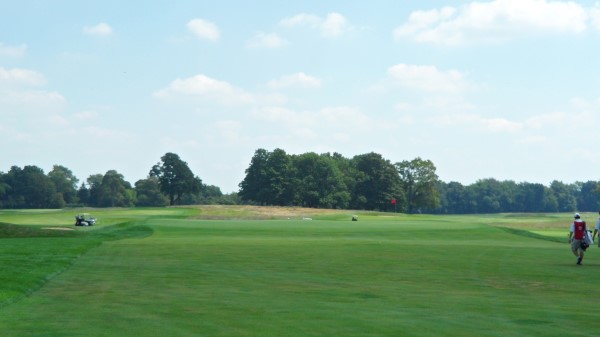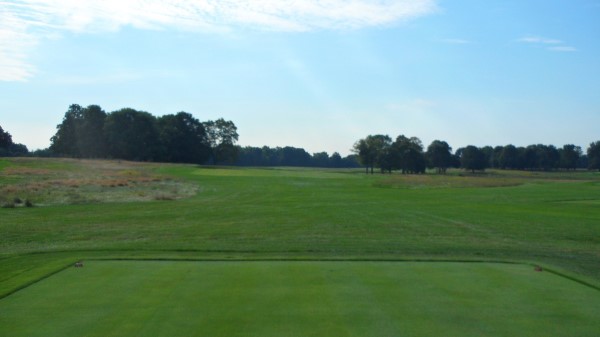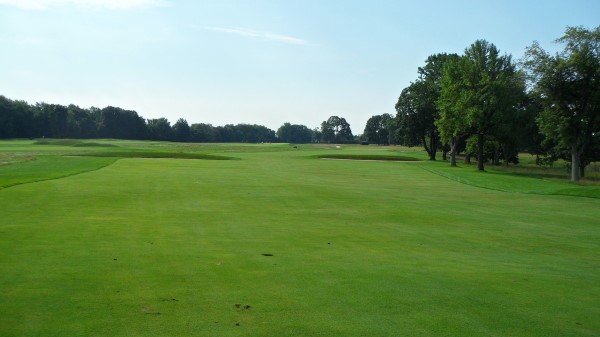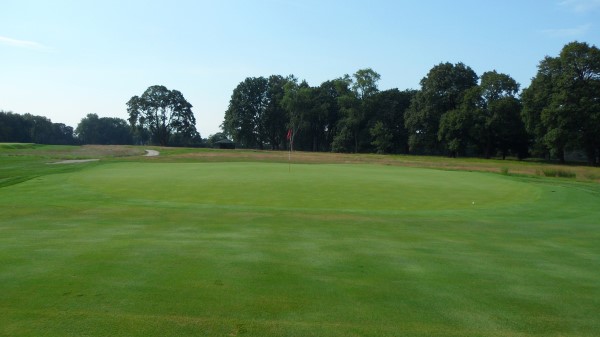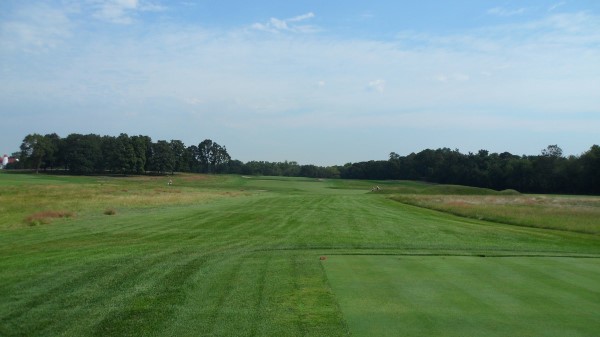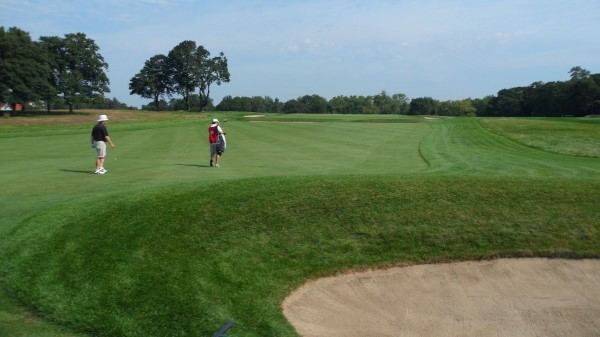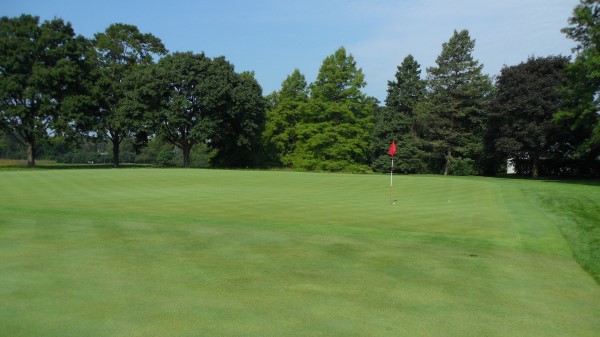Continuing with our series from the The Itinerant Golfer’s quest to play all top 100 American golf courses, The Scratch Pad is glad to bring you a profile of the 15th in the list – Chicago Golf Club.
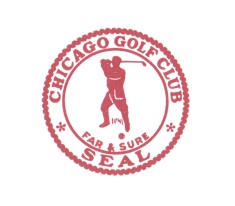 Architect: C.B. MacDonald / Seth Raynor
Architect: C.B. MacDonald / Seth Raynor
Year: 1894 / 1923
Wheaton, Illinois 60189
(630) 665-2988
– Course Access: Private
– Driving range available
– Motorized golf carts and caddies available
– On-site accommodations
– U.S. Open – 1897, 1900, 1911
So why is the Chicago Golf Club one of the most important clubs in America you ask? Where shall we start? Lets see, for starters it was the first 18 hole golf course in North America and the club that established the modern Out of Bounds rule. Next, you have that the club was founded by the first US Amateur champion and de facto father of American golf, Mr. Charles Blair Macdonald. If any more evidence of the clubs importance were necessary, you can make note that Chicago Golf Club is one of the original five clubs that founded the USGA in 1894. If you’re looking for a place that has had a profound impact on golf in America, look no further than Wheaton, Illinois and the Chicago Golf Club.
And why has the golfing public at large never heard of this clearly significant and important club? Well, there are just 125 members and a great many of them play their primary golf at other clubs in the area. This results in very, very little play at Chicago Golf Club. The lack of play also means that guest invites are terribly rare, and truly something to be cherished by the lucky golfers who receive one. When I started the Top 100 quest back in 2007 I identified Chicago Golf Club as one of the five courses that may keep me from completing the quest. Everything I learned over the next three years confirmed that my fears were indeed well founded. In short, getting a chance to play Chicago Golf Club may be as likely as getting struck by lightning.
When the day arrived and I pulled into the driveway at Chicago Golf Club I was pretty excited. After parking my car I went into the locker room to change my shoes and have a look around. The first thing I noticed in the locker room were the cool subway tiled walls which were very popular in the late 1800s/early 1900s and the old metal lockers found at many of the great clubs from this era. I love a locker room with a vintage vibe so I had a good feeling about this place immediately. As would be expected the walls were adorned with golf memorabilia from the club’s history including one of the five original signed documents incorporating the USGA. It was pretty neat to see this important golf document and C.B. Macdonald’s bold signature in the flesh.
Before we tee off so to speak, I’ll give a very brief history of the course itself. Chicago Golf Club was founded in 1892 and at the time was located in Downers Grove, Illinois on Belmont Avenue. In early 1894 the club moved to the current location and C.B. Macdonald laid out the first 18 hole golf course in the United States. As years went by Macdonald felt that the technology of the game was advancing beyond the golf course he had created and it was necessary to redesign the course. He requested his protegee, Seth Raynor, do the work and in 1923 a new course was born. Raynor’s revisions and changes along with a handful of Macdonald’s original holes is the course that remains today.
As we prepared to start our game and discussed the tee selection there was not really much of a decision necessary as far as I was concerned. The back tees played 6,846 yards which on a par 70 course is a pretty serious test. We elected for the considerably more manageable 6,571 yard white tees.
The 1st hole is a 450 yard par 4 and is absolutely not your typical warm up starting hole. The golfer needs to be at ready from the start when teeing it up here. The photo below was taken from the tee and the best line of play is up the right side of the hole as the fairway falls off to the left.
The photo below is where I hit my approach shot from (the rough of course). I was still a good 200 yards out.
The 2nd hole, pictured below, is Raynor’s version of the Road Hole at St. Andrews. This one plays 440 yards from the white tees. Anything in the middle is just great here. The approach shot will be another long one.
The photo below is of the approach shot on the 2nd hole. Note the Road Hole bunker at the front left.
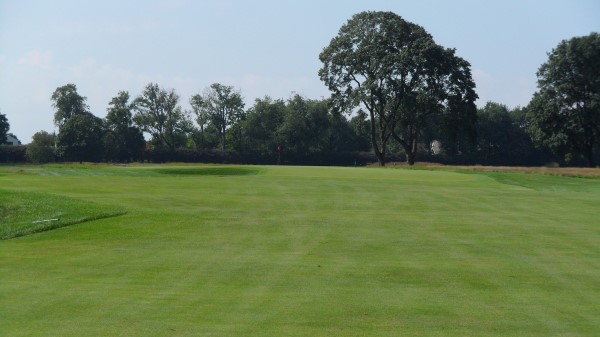
The 3rd hole is a par 3 Biarritz Hole that we played from 219 yards. What makes this a Biarritz is the swale just in front of the putting surface which is just slightly visible in the below photo.
Here is a closer look at the swale in front of the green.
The 4th hole is one of the two Cape Holes at Chicago Golf Club. This one plays as a par 5 and is 536 yards long. Playing to the left of the bunker sets up the ideal second shot.
Below is a look from the fairway at about 180 yards out from the center of the green.
And here is a closer view of the green complex. The bunker that is visible on the left side of the green actually wraps all the way around the back of the green as well as the right side. Regardless of hole location, its best to aim for the middle here.
To the left in the photo below is more of the wrap around bunker.
And here is a little bit more that wraps around the back side.
The 5th hole is a finally a little break in the difficultly. This is a short par 4 that we played from 320 yards. The photo below was taken from the tee box.
After a good drive just a short 60-80 yard pitch will be left to the green. This is where I finally got the message that the greens here are firm and getting shots to hold is difficult. My little wedge into the green didn’t bite and I ended up in the bunker and made double from 70 yards out. Ouch.
The photo below was taken from the 6th tee which is a 395 yard par 4. This is a fairly straight forward drive and you just want to get something in the short grass.
Here is a view to the green from about 80 yards out.
The 7th hole, pictured below, is a par 3 Redan Hole which is another one of Raynor’s template holes. We played this one from 207 yards. The idea here is to hit your ball on the right side o the green and have it feed down the hill to the left where the hole location is.
Below is the 8th hole which is a 413 yard par 4. The line to take with the drive is over the left half of the mound where the caddies are standing.
The approach shot pictured below is fairly straight forward. There are bunkers on the right of the green and behind it so, ideally hitting the second shot from the left side of the fairway would be the best.
At the 9th hole we’ve got a nice 403 yard par 4 hole with a carry over water to the green. You don’t find many water hazards on classic courses so it is a bit of an anomaly. The photo below was taken from the tee box.
Here is a look at the green complex from the edge of the water.
The 10th hole is a par 3 that requires a carry over the same body of water from the 9th hole. It’s not really visible in the photo below, but this green is completely surrounded by Raynor’s shallow bunkers.
Below is a photo taken from the 11th tee. This is a 410 yard par 4 that just slightly bends to the left. The main challenge here is to avoid the numerous bunkers in the fairway and around the green.
At the 12th hole we’ve got another of Raynor’s templates with this one being a Punchbowl Hole. We played this hole from 414 yards to a par of 4. The photo below was taken from the tee box.
Below is a look at the approach shot for this hole. Its crucial to hit your ball left of the hole location in this photo. If you go too far to the right you will find the punchbowl and have a fairly difficult putt back to the correct part of the green.
Here is a closer view of the green and its false front.
Its hard to see in the below photo, but the putting surface takes a bit of a dip behind the flag stick. This is the punchbowl portion of the green and you don’t want to be down there unless that’s where the hole is.
The 13th hole is Raynor’s take on the very famous Eden Hole at St. Andrews. It is a par 3 and we played it from 149 yards. In the photo below you can see that there are bunkers on the front and sides of the green. They also continue almost all the way around the back.
Below is a photo of the 14th hole which is the last of Raynor’s template holes and is another example of a Cape Hole. This one is a par 4 that we played from 351 yards. I didn’t realize that the hole was so short until I nearly hit my driver into the bunker on the right that is just 60 yards short of the green. I probably wouldn’t have hit driver had I looked at the length of the hole, but it turned out fine and I was happy to have a short pitch to the green.
Here is a closer look at the green complex.
I thought the photo below was interesting. Raynor is known for his angles and sharp edges so I thought that the way this green was cut on the corners and front was very Raynor-esque.
Below is the 15th hole that we played from 393 yards to a par of 4. A good drive here will carry the front bunker and stay far enough to the right to avoid the bunker behind it which is just barely visible off the left edge of the front bunker. Unfortunately, I did not do that and my ball found the back bunker and nestled up right next to the lip.
The approach shot to the green at the 15th hole.
The 16th hole which is pictured below from the tee box is a par 5 that we played from 525 yards. The ideal drive will favor the left side of the fairway.
Below is a view of what the second shot looks like. Just make sure you avoid both the bunkers.
And here is a photo of the 16th green. There is a fairly significant false front here that will be a problem for approach shots that don’t quite carry far enough.
Below is a photo of the 17th hole which is a par 4 that we played from 382 yards. There are numerous bunkers to be avoided on the right side of the hole as well as around the green.
The approach shot, pictured below, shows some of the bunkering around the green. Its hard to tell from the photos, but the bunkers in front of the green complex are actually about 45 yards from the green.
I forgot to take any photos on the 18th hole except for the green. Its a bit fitting though as the one photo I did take is of a classic Raynor feature. Note in the photo below that the corner of the green is squared off. As I mentioned before Raynor loved sharp edges and this is a very common feature on many of his courses.
One of the things that struck me most about Chicago Golf Club is how difficult the course was. From the tee, hitting the fairway was imperative as the native grass was so penal that hitting into it usually resulted in a lost ball and hitting your third stroke from the tee. The greens were as firm as can be and I lost track of how many times my approach shots landed on the putting surface but ended up the bunkers that are found around many of the greens. Apparently, I’m not the only one who thinks the course is hard because the course rating is 72.1. That’s more than 2 strokes above the par of 70. Luckily for me I caught fire coming down the stretch and parred 4 of the last 5 holes to tie Mike and beat Larry in our little King of the Hill game we were playing. I could hardly wait to spend my 50 cents!
Something else I found of great interest about Chicago Golf Club is that the course is built on completely flat land. This is clearly noticeable from my amateur photos above. It is hard to catch the nuances of this course and really show its genius in photos taken from ground level by someone with no photography experience like me. I’ve often read statements from the builders of golf courses that the most important piece of the puzzle is having a great site. At Chicago Golf Club Macdonald and Raynor did not. They were not able to rely on breathtaking vistas or undulating terrain so they had to use good old fashioned strategy to make an interesting golf course and I believe they succeeded in spades. Tee to green the course is a challenge, but the real scoring at Chicago Golf Club is done on and around the greens.
I left the clubhouse that day with a renewed enthusiasm for giving back to this great game that has given so much to me. Chicago Golf Club is a very special place and I was very lucky to have an incredible day there with a couple of great guys. What an amazing journey this has been and I’m barely halfway finished.

